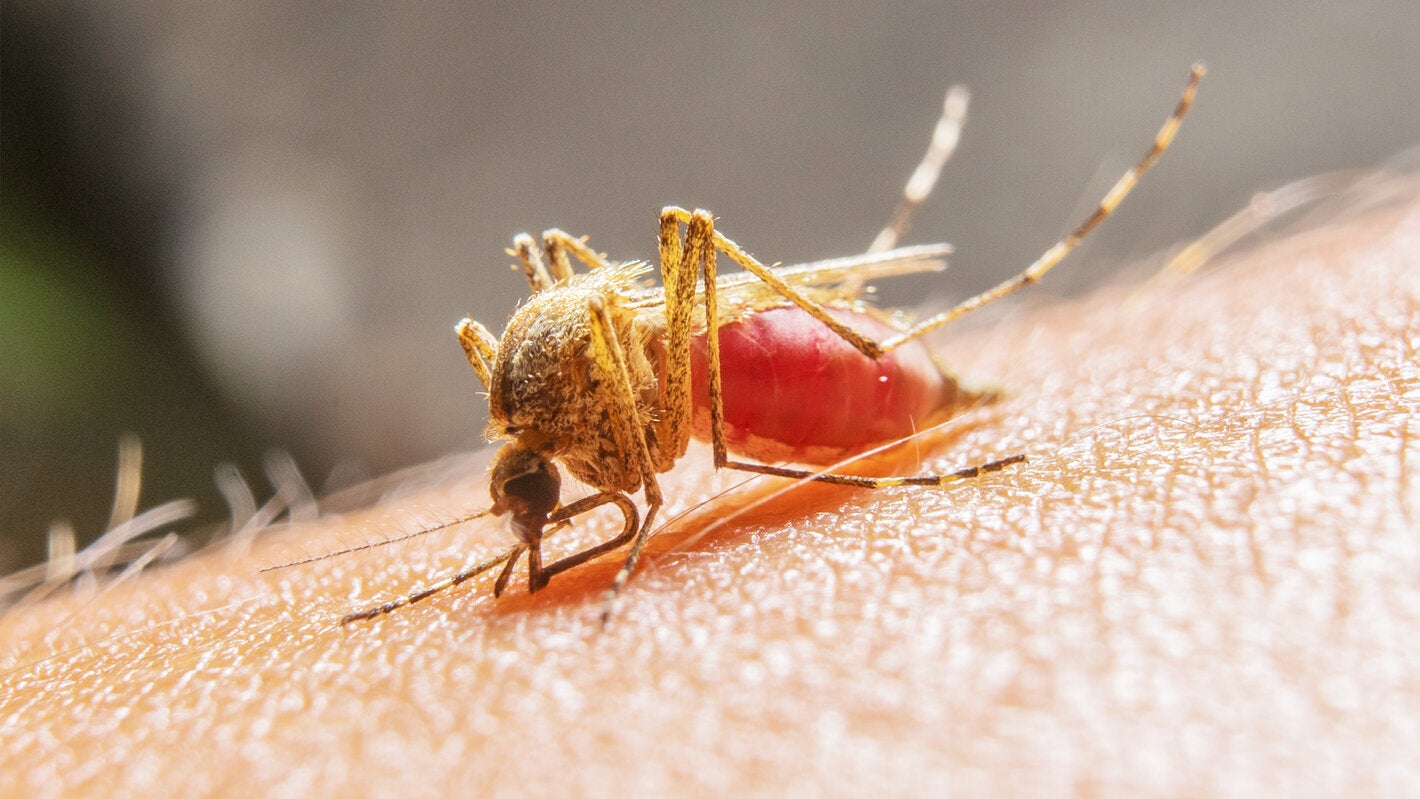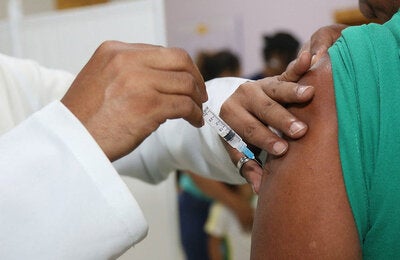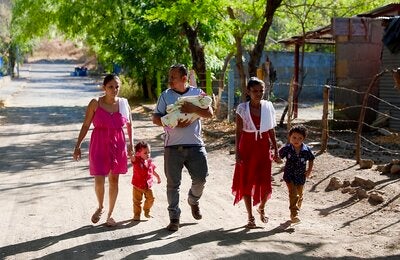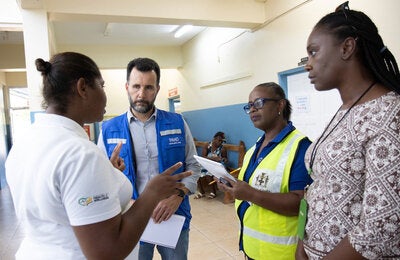
One of every two people in the Americas is at risk of diseases carried by insects
Washington, D.C., 7 April 2014 (PAHO/WHO) - Mosquitoes, ticks, flies and other insects can be far more than a nuisance. The diseases they carry-malaria, dengue, yellow fever, West Nile virus, Lyme disease and many others-can cause serious illness and in some cases death. In the Americas, one out of every two people lives in an area at risk of one or more of these vector-borne diseases.
On World Health Day 2014, the Pan American Health Organization/World Health Organization (PAHO/WHO) and international partners are raising awareness and urging stepped-up action to prevent and control diseases transmitted by insects and other small organisms known as "vectors."
"Vector-borne diseases are a public health threat in countries throughout our region," said PAHO/WHO Director Carissa F. Etienne. "A single mosquito bite can lead to serious illness or even death for people in areas where these diseases circulate."
"Microbes know no boundaries, and neither do mosquitoes," said Tom Frieden, Director of the Centers for Disease Control and Prevention (CDC), in a telebriefing on Apr. 4 organized by PAHO/WHO for World Health Day. "Vector-borne diseases can affect the health security of any country or region of the world."
About half the population of the Western Hemisphere-some 500 million people-live in areas at risk of one or more vector-borne diseases. They include long-established diseases such as malaria, dengue, yellow fever, Chagas disease, onchocerciasis (also known as "river blindness") and lymphatic filariasis (also known as "elephantiasis"). More recent arrivals include West Nile virus, which arrived in the United States in 1999, and chikungunya virus, first reported in the Caribbean last year.
"Globalization, increased travel and shipping, climate change, and urban sprawl are all helping to expand the range of these diseases beyond traditional areas," said Etienne.
West Nile virus and chikungunya both illustrate how quickly and unpredictably vector-borne diseases can spread. Imported into New York in 1999, West Nile virus had by 2005 spread across the U.S. and to other countries of the Americas, from Canada to Argentina. In the U.S. alone, West Nile has sickened some 3 million people and generated some $800 million in health-care costs, said Frieden.
Chikungunya, first reported in the Caribbean in December 2103, took less than three months to reach 10 Caribbean countries. By late March 2014, the region had over 15,000 suspected cases and 3,000 laboratory-confirmed cases.
Other vector-borne diseases with a significant impact in the Americas include:
- Dengue, a potentially lethal viral disease carried by Aedes aegypti mosquitoes. Present in all countries of the Americas except Canada, continental Chile and Uruguay (Uruguay has no cases but does have Ae. aegypti), with some 500 million people at risk.
- Malaria, a parasitic disease transmitted by Anopheles mosquitoes. Endemic in 21 countries of the Americas, with some 145 million people at risk.
- Chagas, a parasitic disease transmitted by Triatominae insects, so-called "kissing bugs." Can lead to organ failure and death. Some 65 million people are at risk in 21 countries of the hemisphere.
- Lyme disease, a bacterial infection transmitted to humans by ticks. Now the most commonly reported vector-borne illness in the United States.
- Leishmaniasis, a parasitic disease transmitted by a variety of insects, present in 19 countries of the Americas. Some 64,000 cases are diagnosed each year, some of which will be fatal.
- Schistosomiasis, a chronic parasitic infection caused by small worms. In the Americas, nearly 1.6 million school-age children need medication to prevent the disease.
- Yellow fever, a viral hemorrhagic disease carried by mosquitoes. From 2000 to 2013, more than 1,100 confirmed cases were reported in the Americas.
- Onchocersiasis (river blindness), a parasitic disease transmitted by black flies that breed along rivers. Colombia became the first country in the world to achieve verification of elimination of onchocerciasis transmission in 2013.
- Lymphatic filariasis, a parasitic infection caused by worms and transmitted by Culex mosquitoes in the Americas. Some 13.4 million people in the region are at risk of infection, 80% of them in Haiti.
To prevent vector-borne diseases, PAHO/WHO recommends that people and communities adopt these simple but effective precautions:
- Wear long-sleeved clothing, apply insect repellent, and use window screens or bed nets as appropriate to reduce exposure to bites.
- Clean up around homes and offices to eliminate vegetation, rubbish, and standing water that can serve as breeding sites for mosquitoes and other vectors.
In addition to these individual and community measures, the PAHO/WHO World Health Day call to action outlines what governments, health officials, and international donors can do to fight vector-borne diseases. Priorities include supporting and strengthening public vector-control programs, improving social and environmental conditions in areas at risk, and making sure that people who need drugs for prevention and treatment can get them.
"We face persisting as well as new threats from vector-borne diseases," said PAHO/WHO Director Etienne. "All of us-working together-must ensure that we each play our part in controlling and preventing vector-borne diseases."
PAHO, founded in 1902, is the oldest international public health organization in the world. It works with its member countries to improve the health and the quality of life of the people of the Americas. It also serves as the Regional Office for the Americas of WHO.



